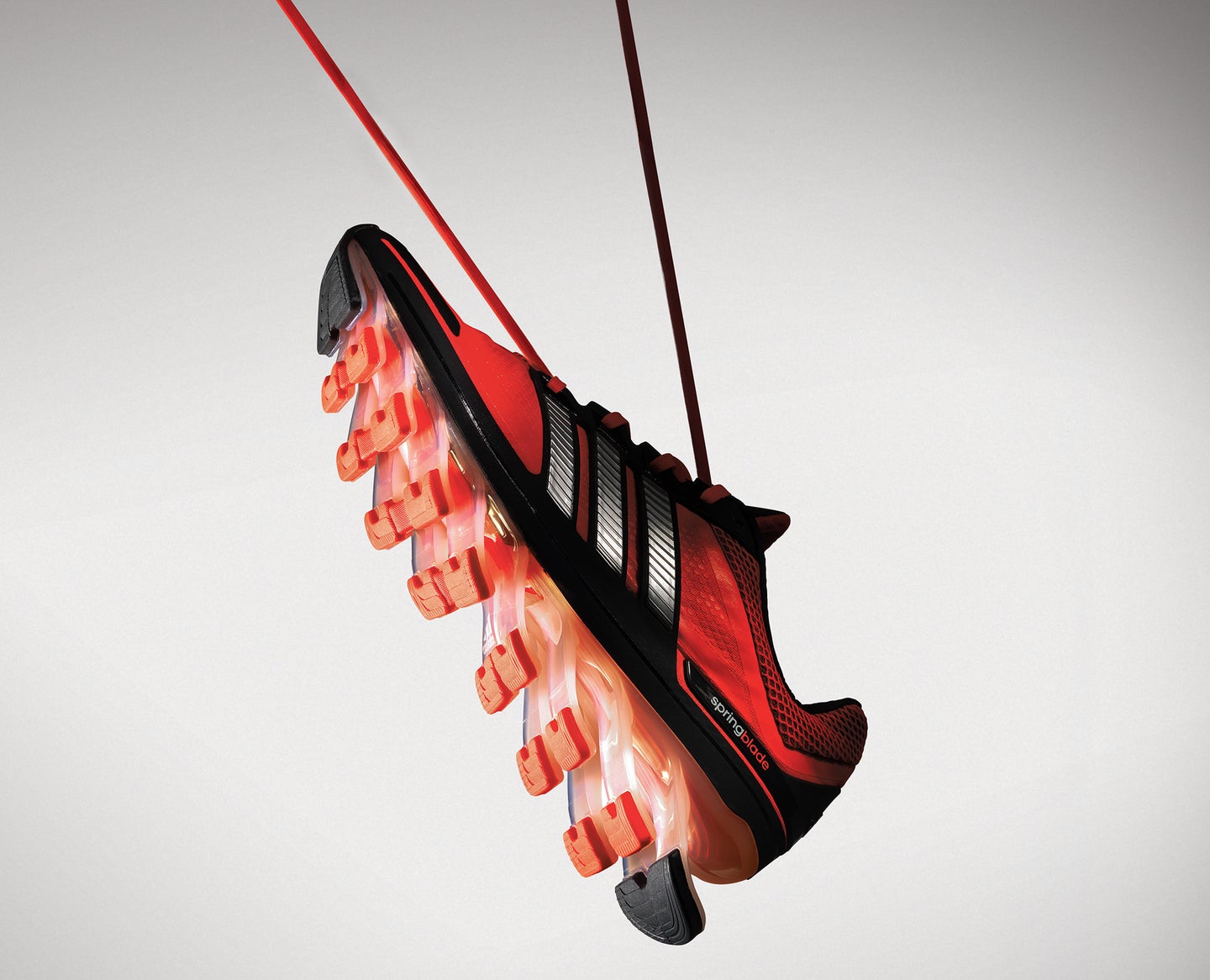These Spiky Shoes Literally Put A Spring In Your Step
The Adidas Springblade uses springs to give athletes better verticality

Cushioned sneakers can help athletes jump higher—a compressed sole returns energy vertically. Adidas has now developed a shoe that could also help runners go faster. Sixteen slanted plastic springs on the sole of the Springblade return a runner’s energy horizontally, providing extra forward momentum. Engineers tuned each spring independently, optimizing thickness, height, and orientation to match the role it plays in a stride. Compared with footsteps taken on standard soles, those on Springblade should have measurably more forward propulsion.
Landing
In a running stride, a person’s heel hits the ground with a force equal to three times his body weight. To absorb the impact, the single spring on the Springblade’s heel is thicker than the others. It’s also as wide as the foot, which helps the shoe grip the ground.
Transition
As the foot rolls forward, the springs—arranged in pairs for balance—compress, storing energy. The arch doesn’t take the same impact as the heel and toes, so these springs are thinner and can squeeze further, gathering even more energy.
Push-off
When a runner’s forward momentum takes over, the heel begins to peel off the ground. That’s when the springs—from back to front—decompress and release energy. At this point in the stride, leg muscles generate thrust too, which puts about 2.5 times a person’s weight on the ball of the foot. Like those at the heel, the springs here are beefier to prevent slipping.
Adidas Springblade
Blades: 16
Weight: 12.8 ounces
Prices: $180
This article originally appeared in the September 2013 issue of Popular Science.